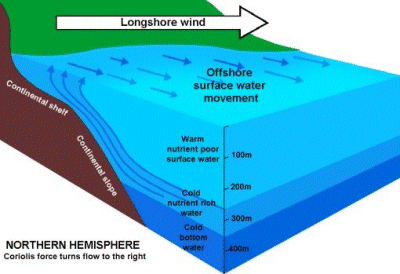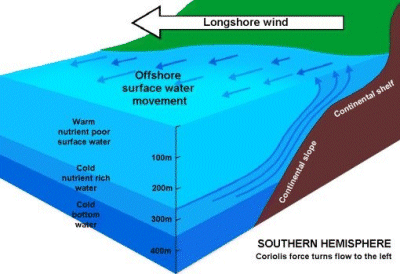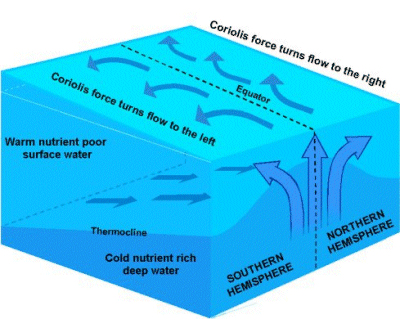Types of Upwelling
Coastal Upwelling
Coastal upwelling is the most common type of upwelling, and the most closely related to human activities as it supports some of the most productive fisheries in the world. It is normally due to along-shore winds: these force water to move, and because of the Coriolis force the flow turns to the right in the Northern hemisphere, and to the left in the Southern hemisphere. If that happens to be the offshore direction, surface water moves offshore and is replaced by cold, nutrient rich water from depth. The figures below illustrate the situation for both hemispheres.
Upwelling at the Equator
Equatorial upwelling is again due to the Coriolis force, acting on the sides of equatorial currents, that pulls the water in different directions in the two hemispheres. Water immediately to the North of the equator will feel a force pulling to the right, while water immediately to the South of the equator will feel a force pulling to the left.
This causes a divergence at the surface at the equator, which drags up nutrient-rich water from below.
Equatorial upwelling is very cleary seen in the Pacific and in the Atlantic, while it is absent in the Indian, mainly because the trade winds are different in either season of the year and also due to the absence of an equatorward eastern boundary current that feeds into the equatorial current.



